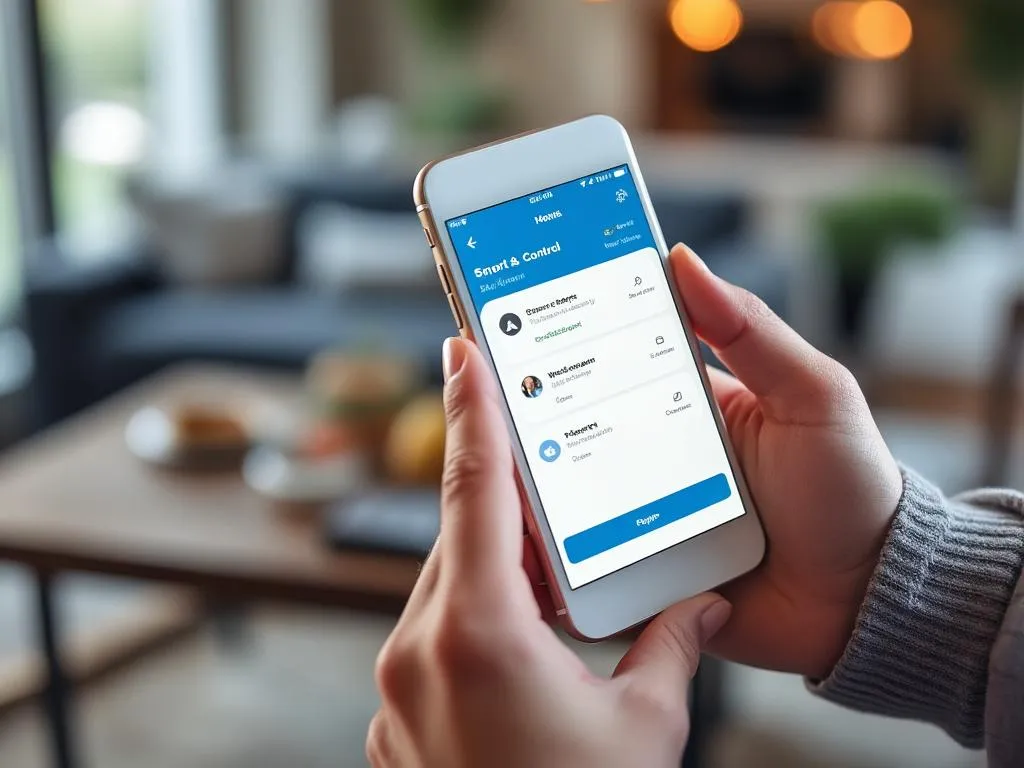Recent Articles

How to Integrate Home Security with Your Smart Home Devices
How to Integrate Home Security with Your Smart Home Devices
Integrating home security with smart home devices is a powerful way to enhance your home’s safety, convenience, and overall functionality. By connecting your security system to smart devices, you can create a seamless ecosystem that gives you full control over your home’s security. Here's how to integrate your home security with smart home devices and take advantage of the benefits this setup offers.
1. Choose a Compatible Security System
Before integrating home security with smart home devices, it's crucial to select a security system that supports smart home integration. Many modern security systems are compatible with popular smart home platforms like Amazon Alexa, Google Assistant, and Apple HomeKit. Look for a system that includes features such as:
Smart sensors for doors and windows
Video surveillance with live streaming
Remote access and control
Compatibility with third-party smart devices
These features will ensure that your home security system works seamlessly with your smart home setup.
2. Connect Security Cameras to Your Smart Devices
Smart security cameras are one of the most useful devices to integrate into your home security system. These cameras can connect to your smart home network and allow you to:
View live footage remotely: Access your security cameras through a smartphone app to check your property in real-time.
Receive instant notifications: When motion is detected, your security system will send alerts to your phone, letting you know if there’s any suspicious activity.
Two-way communication: Many smart cameras include two-way audio, allowing you to speak with visitors through your smartphone, even when you’re not home.
Make sure your security cameras are compatible with your smart home hub for smooth integration.
3. Automate Lighting for Added Security
Smart lighting is an essential part of any integrated home security system. You can use smart lights in conjunction with your security system to:
Create the illusion of occupancy: Program lights to turn on and off at specific times or in response to movement, making it appear as though someone is home even when you're away.
Automate lights based on security events: Set your lights to turn on automatically when your security cameras detect motion or when your alarm is triggered.
Remote control: Adjust your lights remotely through your smartphone, allowing you to manage your home’s lighting while you’re on the go.
Integrating smart lighting with your security system provides an extra layer of deterrence for potential intruders.

4. Use Smart Locks for Enhanced Control
Smart locks offer enhanced control over who enters your home and when. By integrating smart locks into your home security system, you can:
Lock and unlock doors remotely: Use your smartphone to control your door locks from anywhere, allowing you to let in guests, service providers, or family members when you're not home.
Set up temporary access codes: Create time-sensitive codes for visitors or contractors that can be disabled after a set period.
Receive alerts: Get notified whenever someone locks or unlocks a door, keeping you informed of who is entering or leaving your home.
Smart locks can be connected to your home security system for a comprehensive approach to protecting entry points.
5. Integrate Smart Doorbells with Your Security System
A smart doorbell with video capabilities can enhance both security and convenience. When integrated with your home security system, a smart doorbell allows you to:
See and speak to visitors: View live footage from your doorbell camera and communicate with visitors directly from your smartphone.
Receive instant notifications: If someone approaches your door, your doorbell will send an alert to your phone, allowing you to monitor activity in real-time.
Integrate with security cameras: Connect your doorbell camera to your security system's cameras for more comprehensive coverage of your property.
A smart doorbell ensures you're always aware of activity at your doorstep, even when you're away.
6. Automate Your Home with Smart Thermostats and Environmental Sensors
Smart home integration can also enhance your security system with environmental monitoring. You can connect smart thermostats and sensors to your security system to:
Monitor for smoke, carbon monoxide, or flooding: Many home security systems offer integration with environmental sensors that alert you in case of fire, gas leaks, or water damage.
Control your home’s temperature remotely: Adjust your smart thermostat from your smartphone to save energy and ensure a comfortable home environment when you return.
Receive alerts for temperature changes: In the event of an emergency, like a fire or flood, your thermostat can be programmed to shut down HVAC systems or alert you to drastic temperature changes.
This level of automation not only protects your home from potential environmental hazards but also provides energy efficiency benefits.
7. Control Everything from One App
One of the key benefits of integrating home security with smart home devices is centralized control. Most modern systems allow you to control all your smart home and security devices from one app, making it easier to manage:
Arming and disarming your alarm system
Viewing live camera feeds
Locking and unlocking doors
Adjusting lights and thermostats
Having all your devices in one app streamlines the control process and enhances the convenience of your home’s security setup.
Integrating your home security system with smart home devices creates a unified, efficient, and robust security ecosystem. By connecting security cameras, smart lights, locks, doorbells, and environmental sensors, you can monitor and control your home from anywhere, adding layers of protection and convenience. Automation, remote access, and real-time alerts help you stay informed and react quickly to potential security threats, all while simplifying everyday tasks.
For expert advice on integrating smart home devices with your home security system, trust Advanced Home Pros. Contact us today to learn more about creating a connected and secure home environment.

